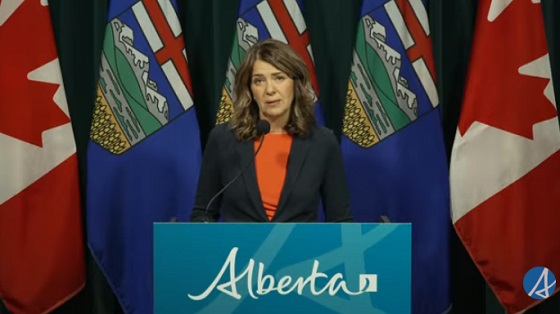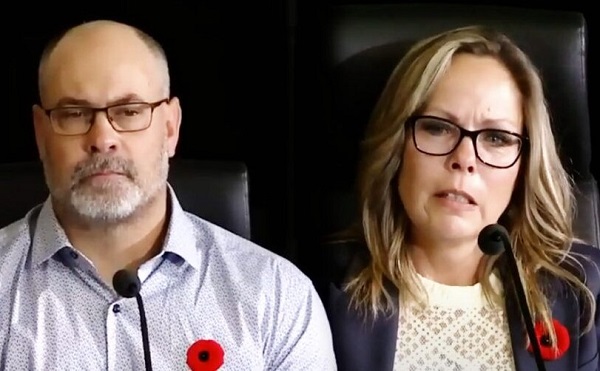Education
New Report Offers a Nuanced Perspective on Canada’s Indian Residential Schools

From the Frontier Centre for Public Policy
Positive stories about Indian Residential Schools must also be heard
The Frontier Centre for Public Policy is pleased to announce the release of a thought-provoking new report titled Positive Stories of Indian Residential Schools Must Also be Heard by Hymie Rubenstein and James C. McCrae. This report challenges the dominant narrative surrounding Canada’s Indian Residential Schools, advocating for a more balanced and comprehensive understanding of their historical legacy.
In Positive Stories of Indian Residential Schools Must Also be Heard, Rubenstein and McCrae critically examine the current portrayal of the residential school system, which is often overwhelmingly negative. The authors argue that this narrative fails to acknowledge the positive experiences of many former students and the genuine intentions of those who worked within the system. While not dismissing the testimonies of abuse, the report emphasizes that these accounts do not represent the full spectrum of experiences at the schools.
The report highlights several stories of individuals who credit their time in residential schools with shaping their successful futures. For instance, Len Marchand, Canada’s first status Indian member of parliament and a federal cabinet minister, attended the Kamloops (BC) Indian Residential School and spoke highly of the education he received there. In his memoir, Breaking Trail, he noted that his time at the school inspired his desire to help his people through education.
Similarly, Tomson Highway, a celebrated Canadian playwright and composer, described his years at Guy Hill Indian Residential School in Manitoba as “nine of the best years of my life.” His parents chose to send him to the school, believing it would provide better opportunities for their children. The skills Highway acquired, including classical piano, were instrumental in his later achievements.
Reverend Canon Stan Cuthand, an Indigenous Anglican priest who served as a chaplain at several residential schools, also offers a positive perspective. He recalled that the schools were not “terrible places” and praised the efforts of staff who worked to protect and nurture the children, even integrating Indigenous culture into the curriculum.
As students return to classrooms this fall, the topic of residential schools has taken a central role in many curricula across the country. However, there is concern that some teachers focus solely on the “horrors” of these institutions or even frame Canada as a genocidal state, leaving little room for a balanced discussion. This report urges educators to offer a more nuanced view that includes both the positive and negative aspects of the residential school system. Stories like those of Tomson Highway and Len Marchand demonstrate that not every experience was one of trauma, and some students went on to achieve remarkable success as a result of their education.
The report also touches on the experiences of Lea Meadows, whose mother, Elsie McLaren Meadows, had a positive experience at the Brandon (Manitoba) Indian Residential School. Inspired by her time there, Elsie became a teacher and later worked in similar schools. Meadows argues that it is unjust to label all who worked at these schools as abusers, recognizing that many were dedicated to the well-being and education of the children.
Moreover, the report cites instances where Indigenous communities themselves supported the continuation of residential schools. For example, in 1970, Alberta’s Saddle Lake First Nation residents successfully protested the closure of Blue Quills School, taking control of the institution themselves. Similarly, in 1971, eight Saskatchewan bands advocated for the Marieval Indian Residential School to remain open, emphasizing its importance for children from challenging home environments.
Positive Stories of Indian Residential Schools Must Also be Heard is a timely and significant contribution to the ongoing debate about the legacy of the residential school system. It encourages Canadians to consider all perspectives in the pursuit of truth and reconciliation, acknowledging both the positive and negative aspects of this complex history.
Download the backgrounder here. (10 pages)
About the Authors:
- Hymie Rubenstein is the editor of REAL Indigenous Report. A retired professor of anthropology, he served as a board member and taught for many years at St. Paul’s College, University of Manitoba, the only Roman Catholic higher education institution in Manitoba.
- James C. McCrae is a former attorney general of Manitoba and Canadian citizenship judge.
Alberta
Alberta Announces Members of Class Size and Complexity Committee

A new Class Size and Complexity Cabinet Committee has been struck to address classroom challenges.
Taking action on class size and complexity
Classrooms in Alberta continue to grow and are becoming increasingly complex, and immediate action is needed to address these issues in the public education system. To meet these issues head on, the Class Size and Complexity Cabinet Committee has been created. The cabinet committee will help guide government policy and deploy resources to deal with class sizes and classroom complexity.
“We are committed to providing world-class education, and we’re building schools and funding education at a rate unprecedented in this province. This committee will help us address the concerns of teachers, parents and students around class sizes and complexity.”
Throughout November, Alberta’s government will continue work with school boards to collect data on class sizes and classroom composition. The cabinet committee will use this data to direct resources to the classrooms that need it the most. Starting in January, this data will be made available and released annually.
The Class Size and Complexity Cabinet Committee will be co-chaired by the Premier of Alberta and the Minister of Education and Childcare. It will also include non-voting members representing school boards, administrators and a teacher representative of the ATA. The committee will also hear from school boards, academic experts, teachers, educational assistants, complex needs specialists and parents to inform its decisions and guide this vital work.
“We heard teacher concerns, and we are providing solutions. The Class Size and Complexity Cabinet Committee will help us take immediate action and ensure teachers and students are given the support they need to succeed.”
In June 2025, Alberta’s government established the Aggression and Complexity in Schools Action Team to provide advice on addressing classroom complexity. The report has been received and will be released soon. Over the coming months, the cabinet committee will start rolling out solutions informed by the action team’s recommendations. In addition, the committee will guide the creation of a new inclusive education policy framework.
“The work of this committee will support teachers in responding to the growing complexity in our classrooms. We will ensure that the voices of the contributors to the initial work guide
solutions that truly improve the educational experience for students and the educators who serve them.”
“I appreciate the government’s recognition of the impact of classroom complexity and their commitment to working collaboratively for improvement. Supporting teachers ultimately improves classroom conditions and student outcomes.”
Using data collected, this cabinet committee will also guide Alberta’s government in executing its commitment to hire 3,000 new teachers and 1,500 new educational assistants over the next three years. They will also assist in identifying and prioritizing where new schools and modulars should be built, advancing the government’s commitment to invest $8.6 billion to build 130 new schools, and provide 109 modular classrooms in the growing communities that need them urgently.
Quick facts
- Members of the Class Size and Complexity Cabinet Committee include:
- Danielle Smith, Premier of Alberta
- Demetrios Nicolaides, Minister of Education and Childcare
- Jason Nixon, Minister of Assisted Living and Social Services
- Rick Wilson, Minister of Mental Health and Addiction
- Searle Turton, Minister of Child and Family Services
- Lynnette Anderson, chief superintendent, Edmonton Catholic Schools
- Nicole Buchanan, chair, Red Deer Public Schools
- Marilyn Dennis, former president of Alberta School Boards Association
- Mike McMann, superintendent, Fort Vermilion Schools and President, College of Alberta School Superintendents
- Joanne Pitman, chief superintendent, Calgary Board of Education
- Dr. Elissa Corsi, Alberta Teachers’ Association
- Only Cabinet members are voting members. Additional guests will be invited to attend and share their expertise at the discretion of the chairs.
- School boards will be required to submit data on Alberta classrooms by Nov. 24.
Alberta
Province orders School Boards to gather data on class sizes and complexity by Nov 24

Better data, better outcomes for Alberta students |
To help schools address classroom complexity, Alberta’s government will begin collecting annual data on class size and composition.
Over the past three years, Alberta has welcomed more than 80,000 new students. With this unprecedented growth, classroom complexity and class sizes are among the biggest issues facing schools and teachers across the province.
To meet this challenge head on, Alberta’s government will work with school boards to gather yearly data on class sizes and composition. This information will be used to better understand staffing, student needs and classroom complexity. School boards will be required to submit data on Alberta classrooms by Nov. 24, and by January, this data will be made publicly available and will then be released annually.
Data collected on classroom complexity will help the province understand and address issues in schools, including class sizes, and support strategic investments in classrooms. Over the next three years, school boards will be provided with funding to hire 3,000 teachers and 1,500 new education assistants to support students with complex needs.
“We are ready to work with school boards and teachers to address classroom complexity and class sizes. We have heard them loud and clear and we are taking bold action to address these issues.”
Alberta’s government is establishing a Class Size and Complexity Task Force to begin work immediately on identifying solutions to the challenges facing Alberta classrooms. Alongside new annual data collection, the task force will ensure every student gets the attention and support they need to succeed. Details about the task force will be shared in the coming weeks.
“This data will provide essential insight into classroom realities, guiding evidence-based decisions and advocating for sustainable funding to address complexity, ensuring every student and educator in Alberta has the support to thrive.”
Quick facts
To inform decisions on addressing classroom complexity, data will be collected on total numbers of:
- all staff, per school, including roles
- substitute teachers
- district staff, listed by job title
- students, per classroom, per school
- severe, mild/moderate, and gifted/talented students, per classroom, per school
- English as an additional language (EAL) students, per classroom, per school
- refugee students, per classroom, per school
- First Nations, Métis and Inuit students, per classroom, per school
- Individualized Program Plans, per classroom, per school
- students waitlisted for assessment, per classroom, per school
- incidents of aggression and violence
- $55 million was provided in Budget 2025 to address classroom complexity.
- 8.6 billion is being invested to build and renovate more than 130 schools across the province.
- Budget 2025 is investing $1.6 billion in learning support funding to help meet students’ specialized learning needs.
- Budget 2025 is investing $1.1 billion to hire more than 4,000 teachers and educational staff.
-

 Business1 day ago
Business1 day agoCarney’s Deficit Numbers Deserve Scrutiny After Trudeau’s Forecasting Failures
-

 Business2 days ago
Business2 days agoHere’s what pundits and analysts get wrong about the Carney government’s first budget
-

 International1 day ago
International1 day agoKazakhstan joins Abraham Accords, Trump says more nations lining up for peace
-

 Alberta23 hours ago
Alberta23 hours agoTell the Province what you think about 120 km/h speed limit on divided highways
-

 Business2 days ago
Business2 days agoCarney budget doubles down on Trudeau-era policies
-

 Automotive1 day ago
Automotive1 day agoElon Musk Poised To Become World’s First Trillionaire After Shareholder Vote
-

 Business1 day ago
Business1 day agoBill Gates Gets Mugged By Reality
-

 COVID-192 days ago
COVID-192 days agoCrown still working to put Lich and Barber in jail




